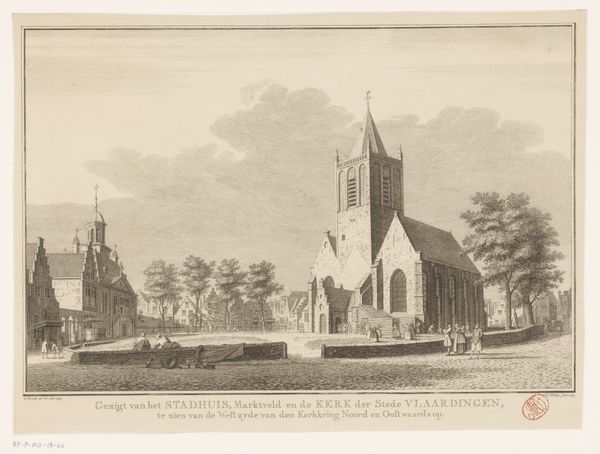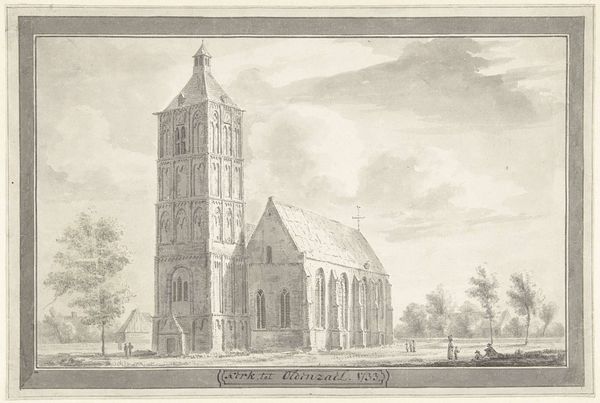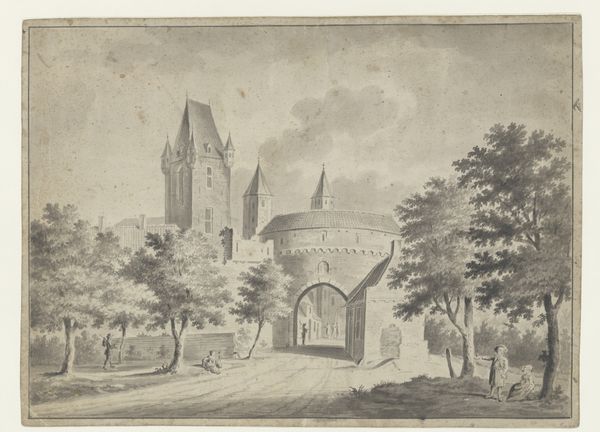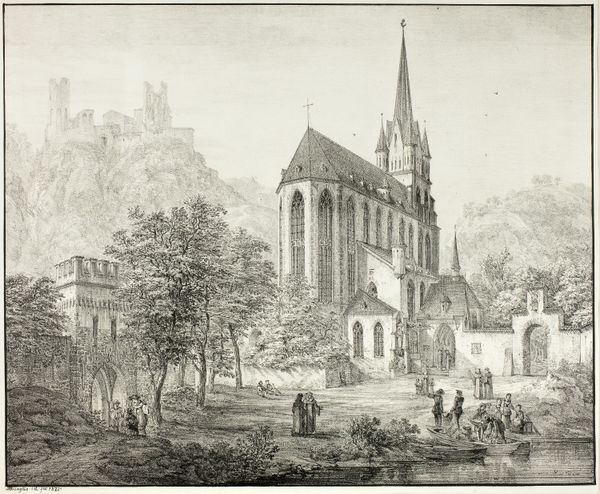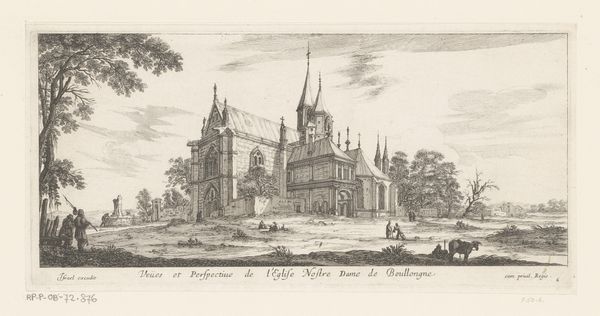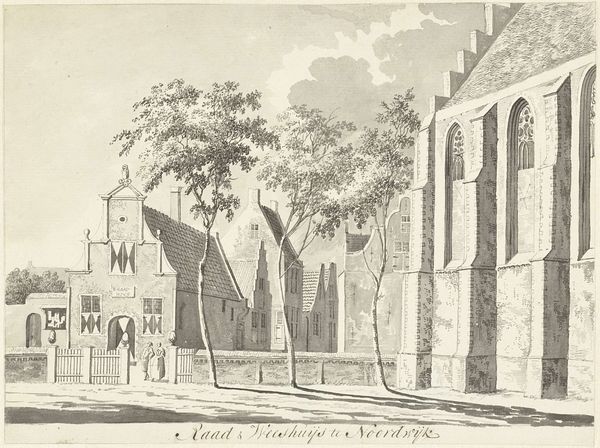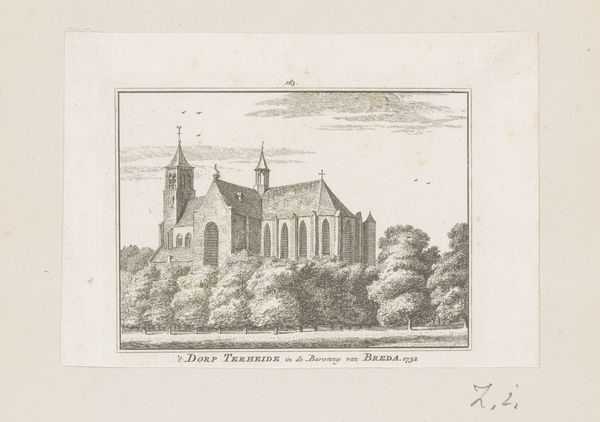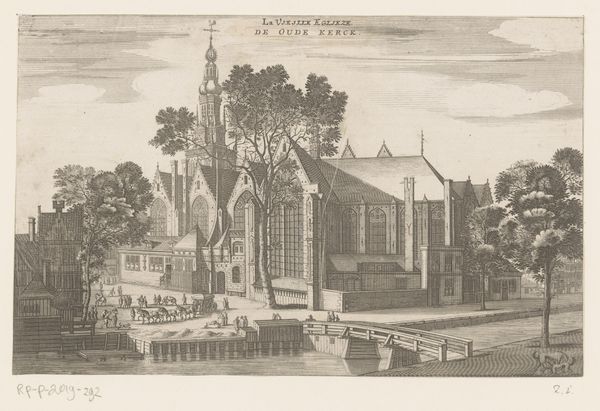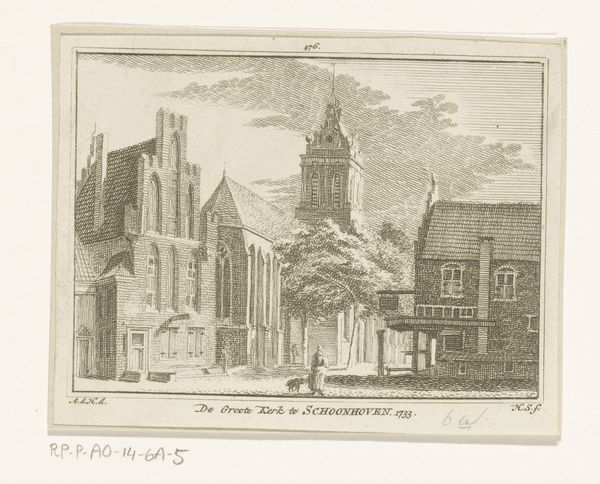
print, etching, engraving, architecture
#
baroque
# print
#
etching
#
landscape
#
etching
#
engraving
#
architecture
Dimensions: height 217 mm, width 316 mm
Copyright: Rijks Museum: Open Domain
Curator: This etching by Nicolas Perelle, dating from between 1651 and 1695, offers us a "View of the Sainte Chapelle de Bourbon l'Archambault," currently held at the Rijksmuseum. What's your immediate reaction? Editor: There's an interesting tension. The intricate detail in the architecture clashes with the roughness of the etching and the stark composition; it creates a haunting, almost melancholy feel. Curator: Indeed. Let's consider the formal elements. Note the artist's deployment of line, particularly in capturing the elaborate Gothic structure. The contrast is amplified by the open sky with very fluid patterns. How do you view his application of such graphic material and what implications it has? Editor: I see this choice to create a print reflecting the social structures around artistic production, particularly the accessibility of prints versus unique paintings for dissemination of architecture. Etchings like this one were the workhorses for the circulation of architectural and landscape images. Curator: Absolutely. Beyond that, however, there's the rigorous structuring. The perspective lines drive your vision right through that window. This use of perspective invites the viewer into a conversation on faith and divinity while drawing attention to form. Editor: Yes, but let's also consider the material impact—the etching process itself, how that repeatable industrial labour would impact the construction trade. Think of how these spread architectural design—a clear disruption from word-of-mouth dissemination. Curator: A fascinating point. By analyzing it through form and material you gain a much richer and complete view of the work. Editor: Exactly, this helps connect artistic labor with the actual historical buildings and communities they reflect.
Comments
No comments
Be the first to comment and join the conversation on the ultimate creative platform.
